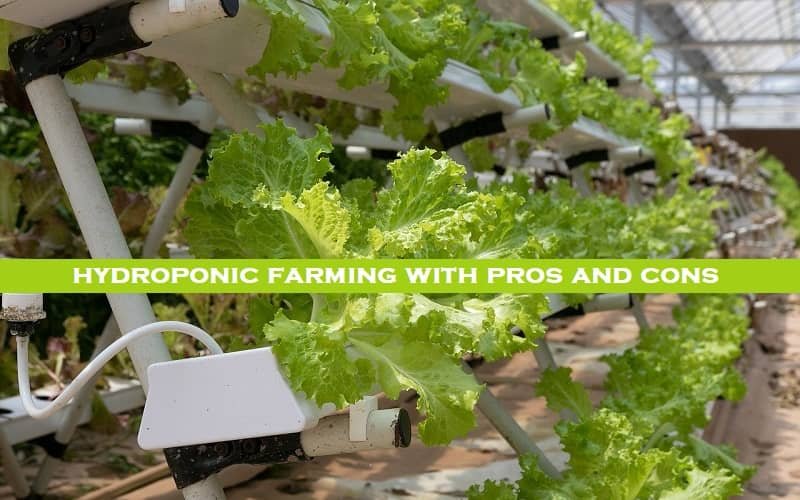Definition of Hydroponic farming/water culture
The word ‘hydroponics’ is derived from two Greek words: ‘hydro’ – meaning water, and ‘ponos’ – meaning labor.
Hydroponics is a technology for growing plants in nutrient solutions (water containing fertilizers) with or without using an artificial medium (sand, gravel, vermiculite, rock wool, perlite, peat moss, coir, or sawdust) to provide mechanical support.
Hydroponic System Growth medium
Growth medium is the substitute for soil in hydroponic systems. The functions of the growth medium are given below.
- To provide the roots with O2.
- Bring the water and dissolved nutrients in contact with roots.
- Anchor the plants so that they do not fall over.
Many different materials can be used as long as they provide the roots with oxygen, water, and nutrients. All the nutrients plants need are dissolved in water, and they are supplied to plants every day. Macro-elements (N; P; K; S; Ca) are needed substantially, whereas plants need minimal amounts of micro-elements (Fe; Zn; Mn; Mg; Cu; Co, Mg).
It is necessary to use was specially formulated fertilizers. Fertilizers used for hydroponics are purer (and expensive) than other fertilizers to prevent precipitation and blockages of the system.
Different hydroponic systems
Two different hydroponic systems are used to produce vegetables: the gravel flow or recirculating system and the open bag or drain to waste system.
1. The gravel flow system: In the gravel flow system, the nutrient solution is recirculated, and the roots of the plants stand in a thin film of nutrient solution all the time. Gravel or sand is used most often as a growth medium.
2. The drain to waste (open-bag) system: In the drain to waste (open-bag) system, plants are grown in containers. Nutrient solution is supplied to plants through a dripper, up to 12 times per day. The number of irrigation cycles per day depends on the temperature and growth stage of plants. The crops in the drain to the waste system grow tall and need to be trained and pruned to grow upwards as a single stem.
Characteristics of hydroponic systems
- No soil is required.
- Plants are irrigated automatically.
- No water stress.
- Nutrients are available at all times.
- Only soluble fertilizers are used.
- Hydroponic fertilizer formulations contain a balanced nutrient content.
- Soil-borne diseases can be eliminated.
- Hydroponic production is not organic because artificial nutrients are always used, and plants are usually not grown in soil.
Advantages/pros of hydroponic farming
- Hydroponically produced vegetables can be of high quality and need little washing.
- Soil preparation and weeding are reduced or eliminated.
- It is possible to produce very high yields of vegetables in a small area because an environment optimal for plant growth is created. All the nutrients and water that the plants need are available at all times.
- One does not need good soil to grow vegetables.
- Water is used efficiently.
- Pollution of soil with unused nutrients is significantly reduced.
Disadvantages/cons of hydroponic farming
- Hydroponic production is management, capital, and labor-intensive.
- A high level of expertise is required.
- Daily attention is necessary.
- Specially formulated, soluble nutrients must always be used.
- Pests and diseases remain a considerable risk.
- Finding a market can be a problem.
